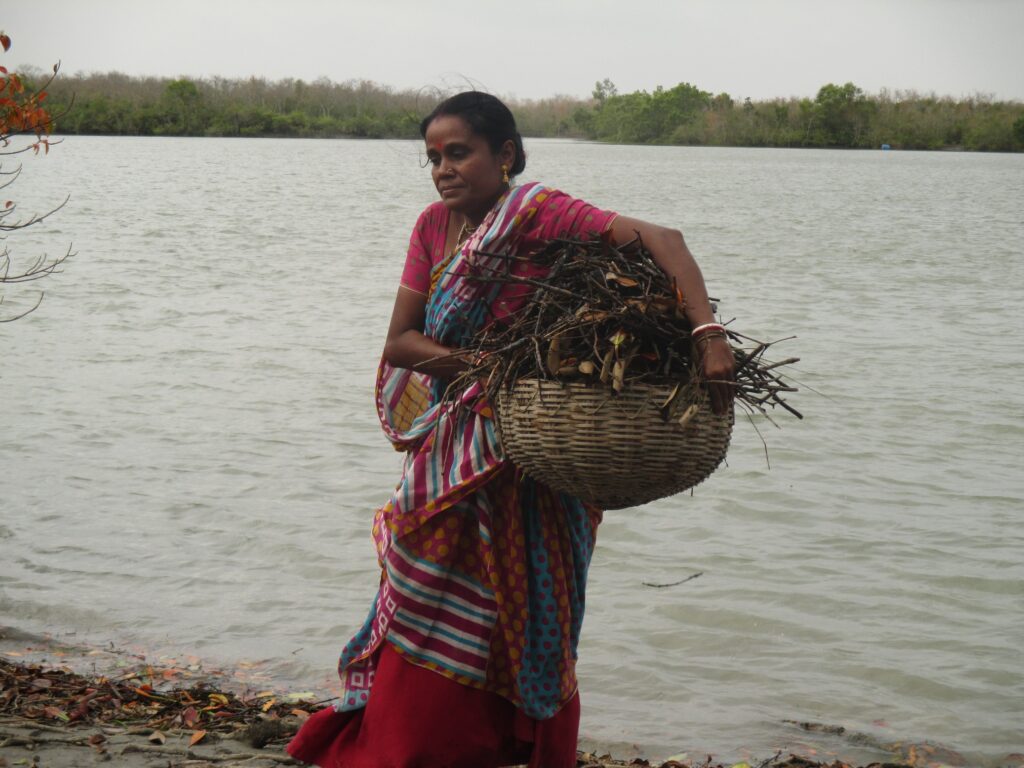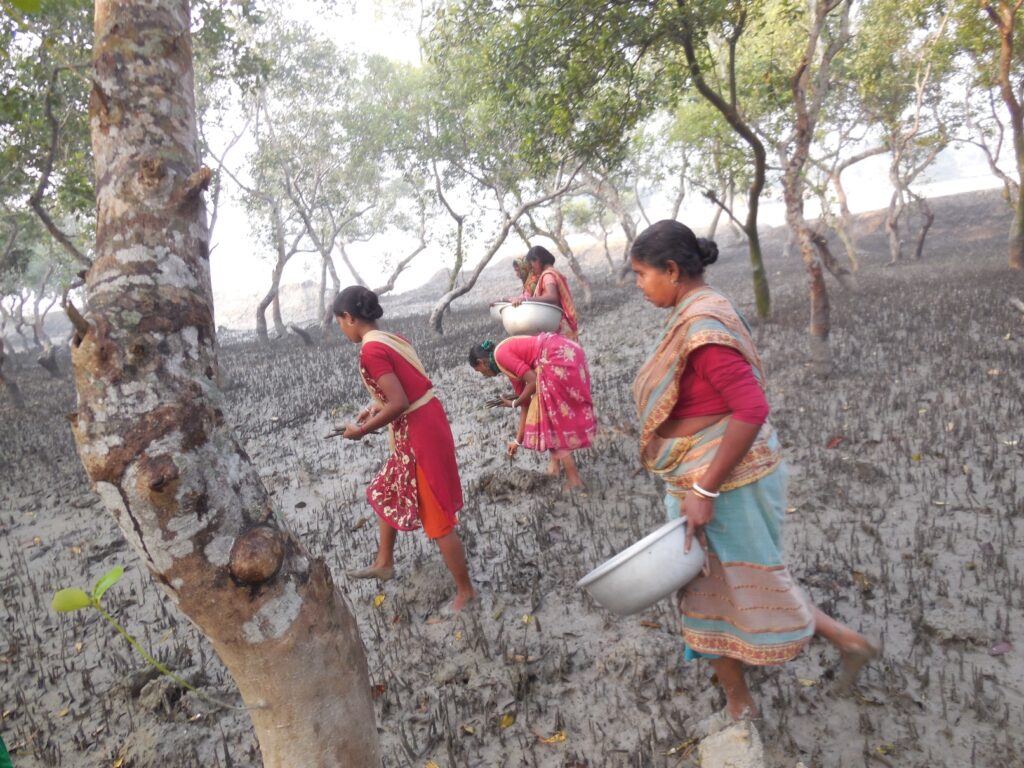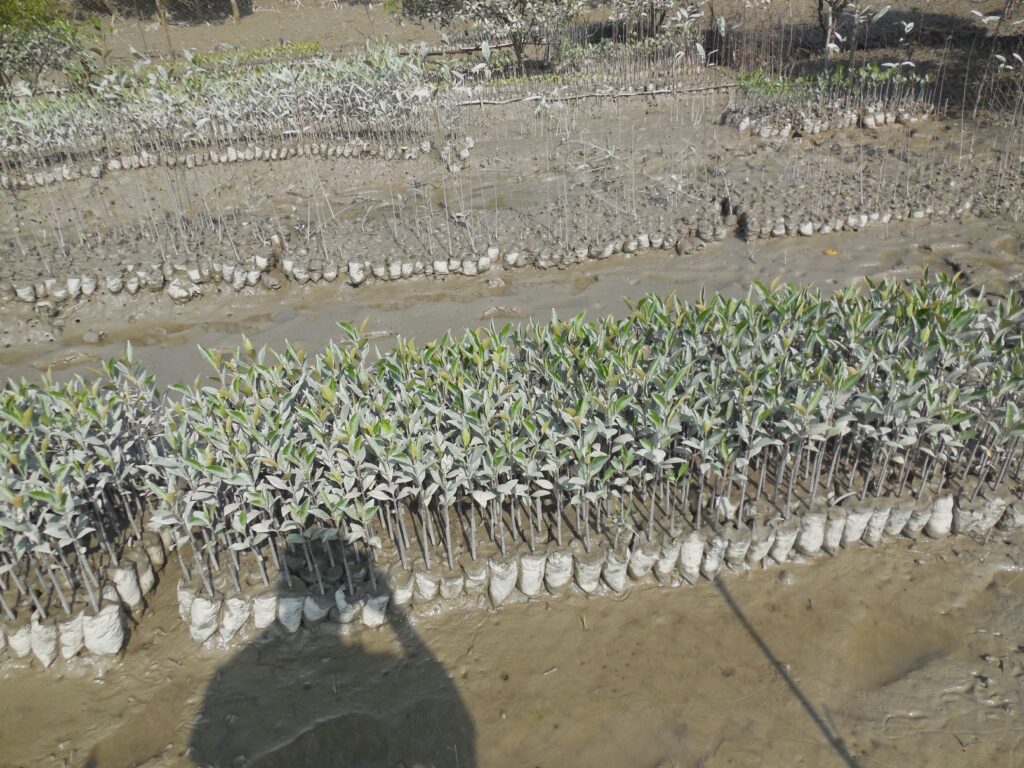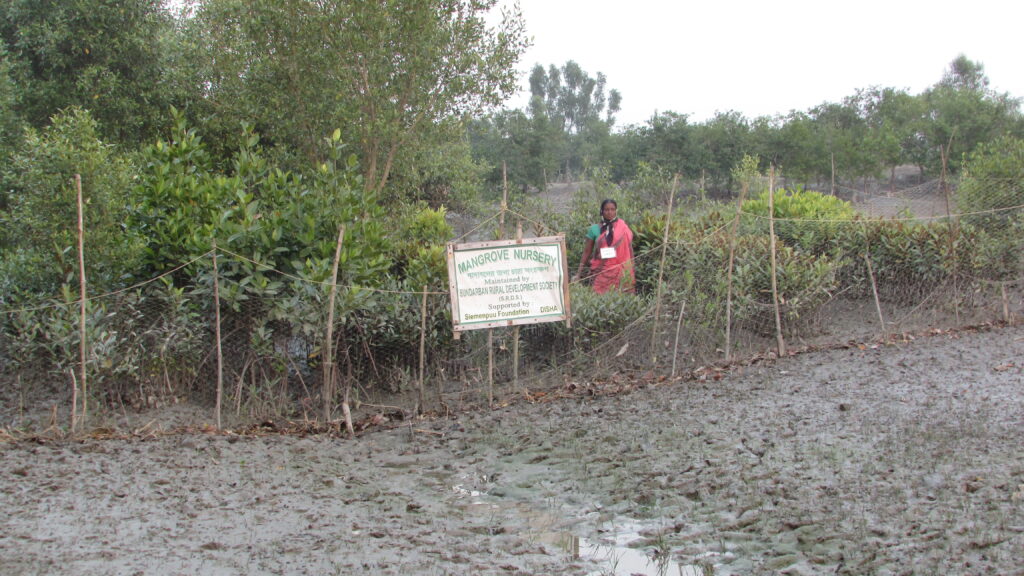Our work with mangroves—A brief history (Part 1)
Society for Direct Initiative for
Social and Health Action (DISHA)
Contents
- The Sundarban Mangroves
- Mangrove planting—how we came to be involved
- Arjun Mondal, Tiger Widows, and mangrove planting
- Tiger Widows Association, the Initiation of plantation
- Interest of Local Forest Department
The Sundarban Mangroves
The world’s largest mangrove forest, the Sundarban, and their importance in the planetary and regional ecology-environment are well-known and do not need emphasizing.
It is also widely known that large tracts of mangroves are being destroyed by unscrupulous tourism, shrimp farming, brick kilns and excessive pollution in rivers. Frequent claims by the authorities of planting mangroves in millions get reported in the media. However, local communities remain alienated from and mostly ignorant of such governmental efforts and the society at large mostly remains in the dark about exactly where and how these plantations are being created.
In this two part blog series we will trace back our work with the community to rejuvenate villages which are situated in the deepest of Sundarban.
Mangrove planting—how we came to be involved
The fishing community and Tiger Widows
For about a decade and half, DISHA has been engaged in protecting the livelihood of fishers and fishworkers in the Sundarban, both in terms of recognition of their traditional rights as forest dwellers and helping them seek additional livelihood options. In absence of recognized rights, most traditional fishers in Sundarban are compelled to visit the forest without permission. When chased by forest guards, they escape into the creeks and deeper forest areas. Here, they often end up being tiger victims.
A large section of Sundarban fishers come from the Gosaba area. A sizeable section comes from villages in the Lahiripur Gram Panchayat in Gosaba Block.
A unique feature of many of these villages is that here many of the local families have lost their sole earning male member to tiger attacks. Such accidents happen so frequently (around 50 per year), one can find several widows in a small area in these fringe villages. After the accidents, these women become hapless, because it becomes almost impossible for them to access compensation, insurance claim, widow pension etc. People recognize them as TIGER WIDOWS
Please see our work regarding tiger widows here.
Arjun Mondal, Tiger Widows, and mangrove planting
Arjun Mondal was a DISHA activist and the founder and the Secretary of a local organization namely Sundarban Rural Development Society (SRDS). He was deeply concerned with the loss of mangrove cover. He was no less concerned about the plight of Tiger Widows. Eventually, he was able to blend these concerns to some extent, as we shall see.
Under Arjun’s leadership, SRDS had taken up the challenge of planting mangroves on the river banks of Lahiripur Gram Panchayet in Gosaba Block. In 2013, SRDS decided to cover around 12 hectares of mudflats stretching on the river bank adjacent to different villages such as Rajat Jubilee, Anpur, Kagmari in Lahiripur GP with support of DISHA.
All these villages had Tiger Widows. The SRDS succeeded organized the tiger widows in different villages. These tiger widows eventually formed Tiger Widow Association. DISHA actively supported them in raising their voice so that they could claim their dues and find livelihood options through various means.
Tiger Widows Association, the Initiation of plantation
Under Arjun’s guidance, a group of 12 tiger widows was appointed to plant mangroves along the river banks of Lahiripur GP. They were also assigned the task of cleaning the forest adjacent to their villages and conducting campaigns to sensitize tourists about not using disposable plastics and abstain from littering forest areas with waste.
The group began mangrove planting with seeds collected directly from the river. They gathered several boat loads of seeds at regular intervals. Initially they developed a nursery in the courtyard of Arjun’s house. But due to paucity of space, the nursery had to be shifted on the mudflat of the river itself.


Interest of Local Forest Department

Mangrove nursery on river bed
Utmost care was taken to develop seedlings or juvenile plants from the seeds. More than 2 lakh seedlings were grown in few years. Varied species of mangroves like garan, genwa, hogla, golpata, keora, hental, garjan, keora, dhundul, kholse, and kankra were germinated. Utmost care was taken by the group of tiger widows to nurture the seeds, keeping them moist, packing them in wet soil and sand. The nurseries became so rich that even local units of the forest department took an interest in procuring such juveniles for plantation in other areas. They purchased a good number of such seedlings, which were planted elsewhere.

Nursery Garden
Follow for More in Part 2 of the blog series.

